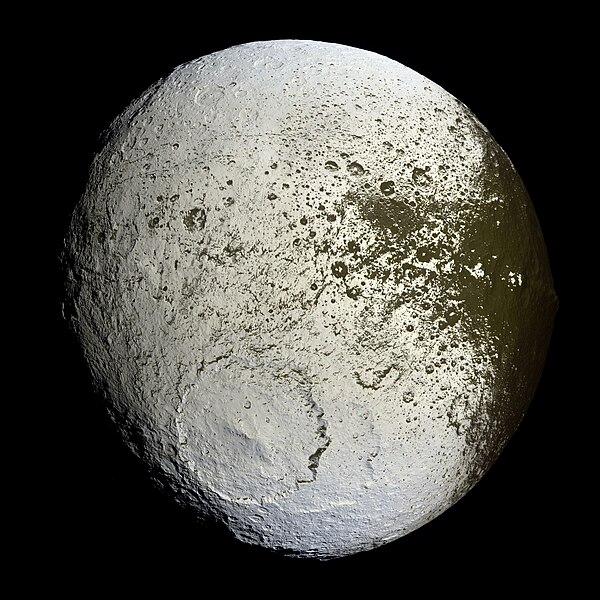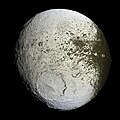Сурет:Iapetus as seen by the Cassini probe - 20071008.jpg
Навигацияға өту
Іздеуге өту

Бұл алдын ала көрудің өлшемі: 600 × 600 пиксел. Басқа ажыратылымдықтар: 240 × 240 пиксел | 480 × 480 пиксел | 768 × 768 пиксел | 1024 × 1024 пиксел | 2048 × 2048 пиксел | 4032 × 4032 пиксел.
Түпнұсқа файл (4032 × 4032 пиксел, файл өлшемі: 6,22 MB, MIME түрі: image/jpeg)
Файл тарихы
Файл сол кезде қалай көрінгенін көру үшін күн/уақыт дегенге басыңыз.
| Күн/Уақыт | Нобай | Өлшемдер | Қатысушы | Пікір | |
|---|---|---|---|---|---|
| қазіргі | 23:07, 2018 ж. желтоқсанның 12 |  | 4032 × 4032 (6,22 MB) | Kesäperuna | 100% JPEG quality from full quality TIFF, slightly cropped to be more centered. |
| 14:18, 2007 ж. қазанның 9 |  | 4100 × 4100 (1,56 MB) | Startaq | {{Information |Description = Cassini captures the first high-resolution glimpse of the bright trailing hemisphere of Saturn's moon Iapetus. This false-color mosaic shows the entire hemisphere of Iapetus (1,468 kilometers, or 912 miles across) visible fro |
Файл қолданылуы
Бұл файлды мына бет қолданады:
Глобалды файл қолданылуы
Бұл файл келесі басқа уикилерде қолданылады:
- af.wikipedia.org жобасында қолданылуы
- an.wikipedia.org жобасында қолданылуы
- ar.wikipedia.org жобасында қолданылуы
- ary.wikipedia.org жобасында қолданылуы
- arz.wikipedia.org жобасында қолданылуы
- ast.wikipedia.org жобасында қолданылуы
- az.wikipedia.org жобасында қолданылуы
- ba.wikipedia.org жобасында қолданылуы
- be.wikipedia.org жобасында қолданылуы
- bg.wikipedia.org жобасында қолданылуы
- bn.wikipedia.org жобасында қолданылуы
- bn.wikibooks.org жобасында қолданылуы
- bs.wikipedia.org жобасында қолданылуы
- ca.wikipedia.org жобасында қолданылуы
- ckb.wikipedia.org жобасында қолданылуы
- cs.wikipedia.org жобасында қолданылуы
- cv.wikipedia.org жобасында қолданылуы
- cy.wikipedia.org жобасында қолданылуы
- de.wikipedia.org жобасында қолданылуы
Бұл файлдың глобалды қолданылуын көбірек көру.



